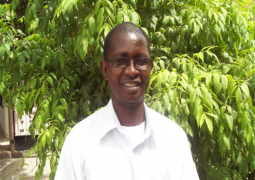The composition of the UNSC has only been changed once. This occurred in 1964, after a large expansion of UN membership and two years of intense debate that resulted in four additional non-permanent seats, increasing the Council to 15 members.
Discussions about UNSC reform assumed a different approach during the most recent round of negotiations that started early in 2015. The former UNGA president, Sam Kutesa from Uganda, worked closely with the chair of the intergovernmental negotiations - the Jamaican representative, Courtney Rattray - to advance the discussions. Each UN member state was asked to present its position, and these were then used to draft a single, integrated negotiation text.
The document produced was 118 pages long, consisting of 22 official pages plus 96 pages of specific ‘inputs’ provided by several members. This so-called Framework Document highlighted the same issue that has plagued discussions in the last two decades: member states are not willing to compromise.
Despite agreement on the need to expand the number of UNSC seats, there is no consensus on the categories of seats that should be expanded, or which countries would be able to assume new permanent, semi-permanent or any other category of seats.
Eventually, the only difference between this painful process and those from before was a slight increase in mentions about the legitimacy of the African claim for greater permanent representation. All other issues, both substantive and procedural, remained contested, and most of the statements made during the various sessions only repeated past positioning.
There are many problems related to the reform debates, but two deserve special attention: regional competition, and the resistance from the five permanent members of the UNSC - the so-called P5.
There are five voting regions represented in the 10 non-permanent seats in the UNSC: Eastern Europe, Western Europe, Asia, Africa and Latin America and the Caribbean. Debates about better representation inside the UNSC, within and between these regions, are intense, as well as amongst cross-cutting lobby groups such as the Non-Aligned Movement (NAM), Uniting for Consensus and the G4 (consisting of Germany, Japan, India and Brazil).
Some member states want equal regional representation - arguing that it would be fair to have at least one permanent seat for each regional group, even though the groups are of dissimilar size and disparate geographical coherence. However, the disagreements within each of these regions stymie progress.
There is a constant questioning of which country would have capacity to assume such an important position. At the same time, smaller countries are not willing to give hegemonic power to their neighbours. Eventually, the 2015 negotiations in New York were only able to agree on the need for expansion but not on any details of the content of such reform.
It is important to bear in mind that no reform will happen without the agreement of the P5 given the power of the veto - the ‘concurring votes of the permanent members’. It blocks every possible solution for UNSC reform. Without agreement from the United States of America, the United Kingdom, France, Russia and China, no binding decision can be made.
Expanding or otherwise changing the UNSC’s structure would require an amendment of the Charter and, therefore, the positive votes of two-thirds of the UNGA - including agreement by each of the P5 - and subsequent ratification by their respective national legislature.
During the last two decades of negotiations, the P5 have been very reticent on their views about an expansion. All five allegedly support an unspecified enlargement of the UNSC, and a statement to this effect is sometimes the only contribution from some P5 members during the discussions. Other than that, the P5 are emphatic - especially Russia - on maintaining the veto. It is, therefore, hard to avoid being cynical about reform.
So, what can we expect for the 2015/2016 session?
The new president of the UNGA, Mogens Lykketoft, was elected in the middle of 2015. Lykketoft previously served as Denmark’s foreign and finance minister and declared his action-oriented commitment to establishing a stable world. But hopes for reform remain low. The new chair of the intergovernmental negotiations, Sylvie Lucas from Luxembourg, was appointed in October 2015 - apparently after significant pressure from China to avoid the re-election of Rattray.
The most recent meeting on the ‘Question of equitable representation on and increase in the membership of the Security Council and related matters’ was held by the UNGA on 30 October 2015. Like those before it, the meeting concluded without any progress.
Given the size of the group, the African position is important. Developed from its previous position - known as the Harare Declaration - the African Union (AU) tabled its proposal (the Ezulwini Consensus) in July 2005. The Ezulwini Consensus deals with various aspects related to reform of the UN; including but not restricted to reform of the UNSC. It notes that Africa ‘is opposed in principle to the veto’, but then adds that as long as it exists, it should be made available to all permanent members of the Security Council.
The African position is for 11 additional members on the UNSC, increasing its size to 26. The proposal is that Africa will get two permanent seats and five non-permanent seats. The AU position is that the ‘question of the criteria for the selection of African members of the Security Council should be a matter for the AU to determine, taking into consideration the representative nature and capacity of those chosen.’
The problem is that the African representation at the UN lacks capacity. Most permanent missions are small, not very well equipped and, consequently, not able to coordinate and better represent their member states within the UN. Africa must overcome these internal challenges if it is to effectively engage in the international arena.
It is difficult to point to a solution for the problems of UNSC reform within the current approach. That is why the Institute for Security Studies has proposed mobilising civil society and academics through the Elect the Council initiative, launched in 2015.
The inordinate influence of the P5 on the decisions of the UNSC is a particular source of frustration to African countries, as well as to India, which is recognised as having a legitimate claim based, among others, on its 18% share of the global population.
Divisions among the P5 frustrate efforts by the UNSC to engage constructively on flashpoints such as the Middle East and in the South China Sea, where disputes over territory and sovereignty between a number of countries (China, Vietnam, the Philippines, Malaysia and Brunei) are particularly concerning. The only region where the UNSC can act effectively is in Africa, given the absence of direct great power interests.
Elect the Council proposes that the only plausible reform scenario is where two-thirds of member states agree on detailed recommendations on reform, not general principles. And for members to then engage with the P5 in the UNGA with these specific demands, thus frustrating the ability of the permanent members to divide and rule. The fourth revised and updated version of the Elect the Council reform proposals will shortly be available.
Marina Magalhães B L da Silva, post-doctoral fellow, University of the Free State; Jakkie Cilliers, Head, African Futures and Innovation Section, Institute for Security Studies
Read Other Articles In Article (Archive)
Sankung Sillah & Sons faces D600, 000 claim
Sep 22, 2010, 12:16 PM



